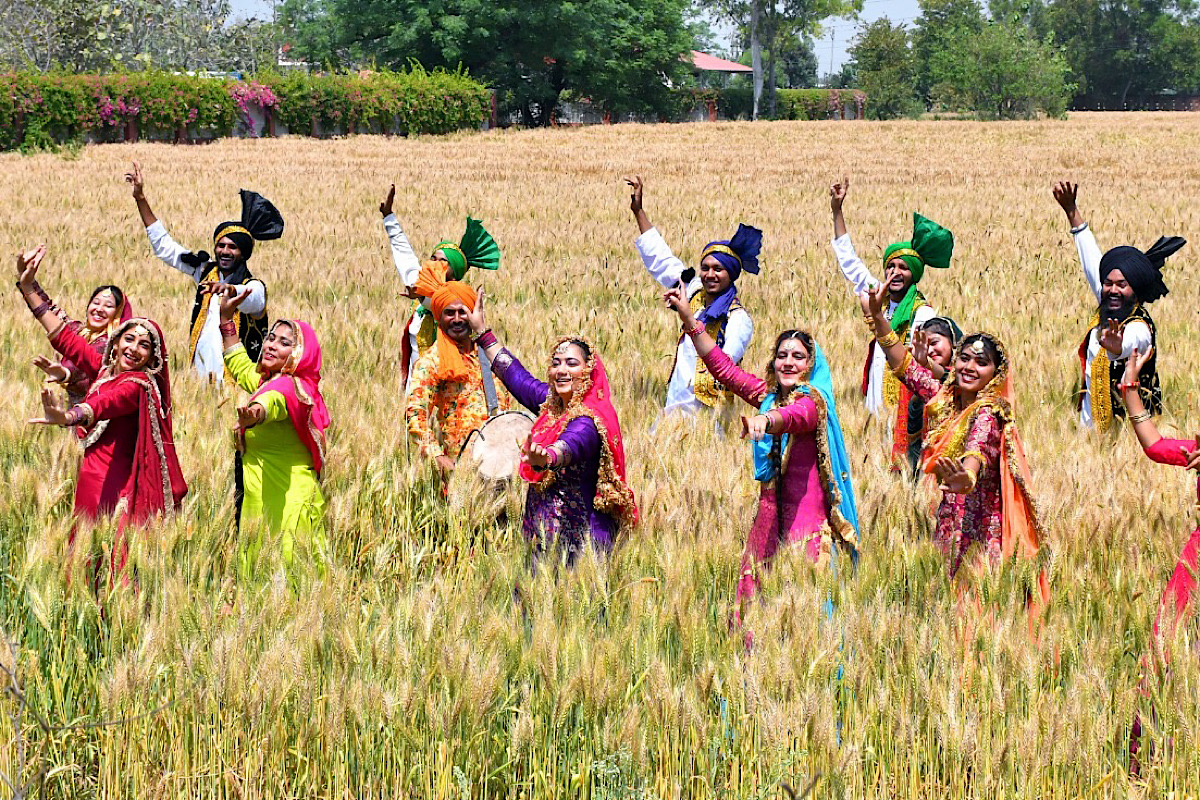Mahesh Bhatt hosts talk show on lives of 13 prominent Sikhs of India
Renowned filmmaker Mahesh Bhatt is hosting a talk show with the series ‘Pehchaan: The Unscripted Show’ on SonyLIV.
Though a celebration of harvest season, Baisakhi has a traditional, cultural and historical significance. It was on the eve of Baisakhi in 1699 Guru Gobind Singh rallied Sikhs to fight against Mughals. The festival is also celebrated by Sikhs to mark the coronation of Guru Gobind Singh as well as the foundation of the Khalsa sect of Sikhism.

Baisakhi festival celebrated in Punjab [Photo:ANI]
Baisakhi, one of the most popular harvest festivals of India, is widely celebrated with traditional gaiety and fervor in northwestern parts of the country in general and Punjab in particular. The day also has a religious significance as it also marks the first day of the first month of the Sikh calendar called Vaisakh that falls around mid-April every year.
The festival of Baisakhi signifies a new beginning and growth.
As we all know different parts of the country celebrate the arrival of the harvest season through various traditions and regional festivals. Baisakhi is one of them. It also marks the arrival of the spring season.
Advertisement
The festival is mainly celebrated in Punjab, Haryana and western Uttar Pradesh. On the occasion, Sikhs participate in Nagar Kirtans (choral singing of hymns known as shabad in Sikh tradition) as choir and witness martial skills of Khalsa on display. People also recite Gurbani (recitation of portions of the Guru Granth Sahib).
Performance of local and traditional dance forms, including Bhangra and Gidda, are a common feature during the celebration of the day in various parts of Punjab and Haryana.
This is the time of the year when farmers harvest rabi crop and pray for a prosperous future. In parts of Himachal Pradesh and Uttarakhand, the festival is celebrated with great zeal. People gather with their local dainties and perform holy rituals following the harvest of the crop.
In Haryana, the festival is celebrated with the same zeal as in Punjab. After reaping the harvest, farmers and other people come together for merrymaking. They celebrate the occasion by singing and dancing to the tune of folk music and organise fairs. In parts of Uttar Pradesh, the celebration is observed by offering fresh crop to local deities. While the festival has its origin in Punjab, nevertheless it is widely celebrated in the entire region thanks to the cultural influence of the Sikh community.
Baisakhi has a history behind it. In 1699, on the eve of Baisakhi, Guru Gobind Singh rallied Sikhs to fight against Mughals inspiring them through his words and actions. The festival is also celebrated by Sikhs to mark the coronation of Guru Gobind Singh as well as the foundation of the Khalsa sect of Sikhism.
A meeting was convened by Guru Gobind Singh which was attended by 50 to 80 thousand Sikhs. At the meeting, the entire gathering was expecting to hear a word of comfort from their Guru, but all were surprised to see him with a sword in his hand, calling out, “Is there anyone here who would lay down his life for Dharam?” There was a long pause in the audience, but the Guru kept on repeating his words.
At the third call, Daya Ram, a Khatri from Lahore, rose from his seat and offered himself for the noble cause. The Guru took him into an adjoining enclosure before coming out with the (blood) dripping (sword in hand) and flourishing it before the gathering. He again asked the gathering, “Is there any other Sikh here who will offer himself as a sacrifice (for the cause of dharma)?”
At this, Daram Das, a Jatt from Delhi (Haryana region) came forward and was taken into the enclosure. (The Guru again came out with the blood-stained sword, and made his previous demand). This way, three other men stood up, one after another, and offered themselves for the sacrifice. One among them was Mohkam Chand, a washerman of Dwarka (Gujarat); another was Himmat, a cook of Jagannath temple (Orissa); and the third was Sahib Chand, a barber of Bidar (Karnataka). The Guru, after dressing the five up in handsome clothes, brought them from the assembly.
These five were then administered ‘Khande di Pahul’ (the double-edged sword Amrit). They were then knighted as Singhs, as the five beloved ones, the first members of the Order of the Khalsa. The Guru then asked them to administer the Pahul to him in the same manner in which he had given the Pahul to them, and it was done so.
As per the Khalsa Sambat, the festival has been held since the beginning of the Vaisakh 1756 Bikrami (March 30, 1699), also known as Khalsa. After its birth, the Khalsa created history so much that the history of Punjab has become synonymous with the history of Sikhs.
Baisakhi played a significant role in this regard. In 1762, Ahmed Shah Abdali, with the sole purpose to destroy the entire Sikh nation, declared ‘Jehad’ (holy-war) against Sikhs and all the Muslims of the Punjab rallied under this slogan.
Some Sikhs were ambushed near the village Kup in the Ludhiana District. Chronicles mention that about 25 Sikhs were martyred in a single day. The incident is known in the history of the Sikhs as “Ghallughara” (Bloody Carnage). It is also celebrated as the birth of the army of common people against Mughal invaders.
Hence, the festival of Baisakhi has a rich tradition in both religion and culture.

Advertisement